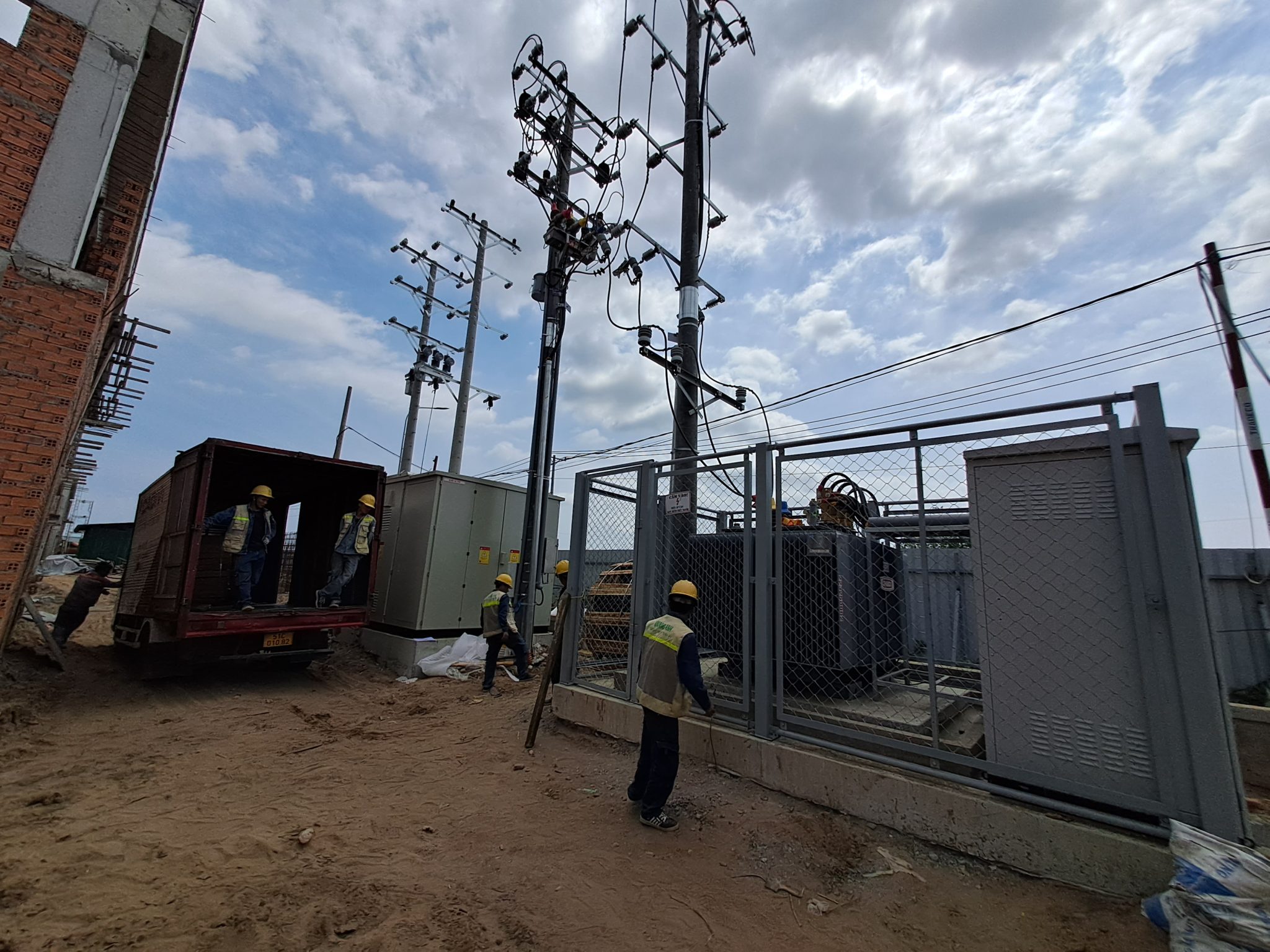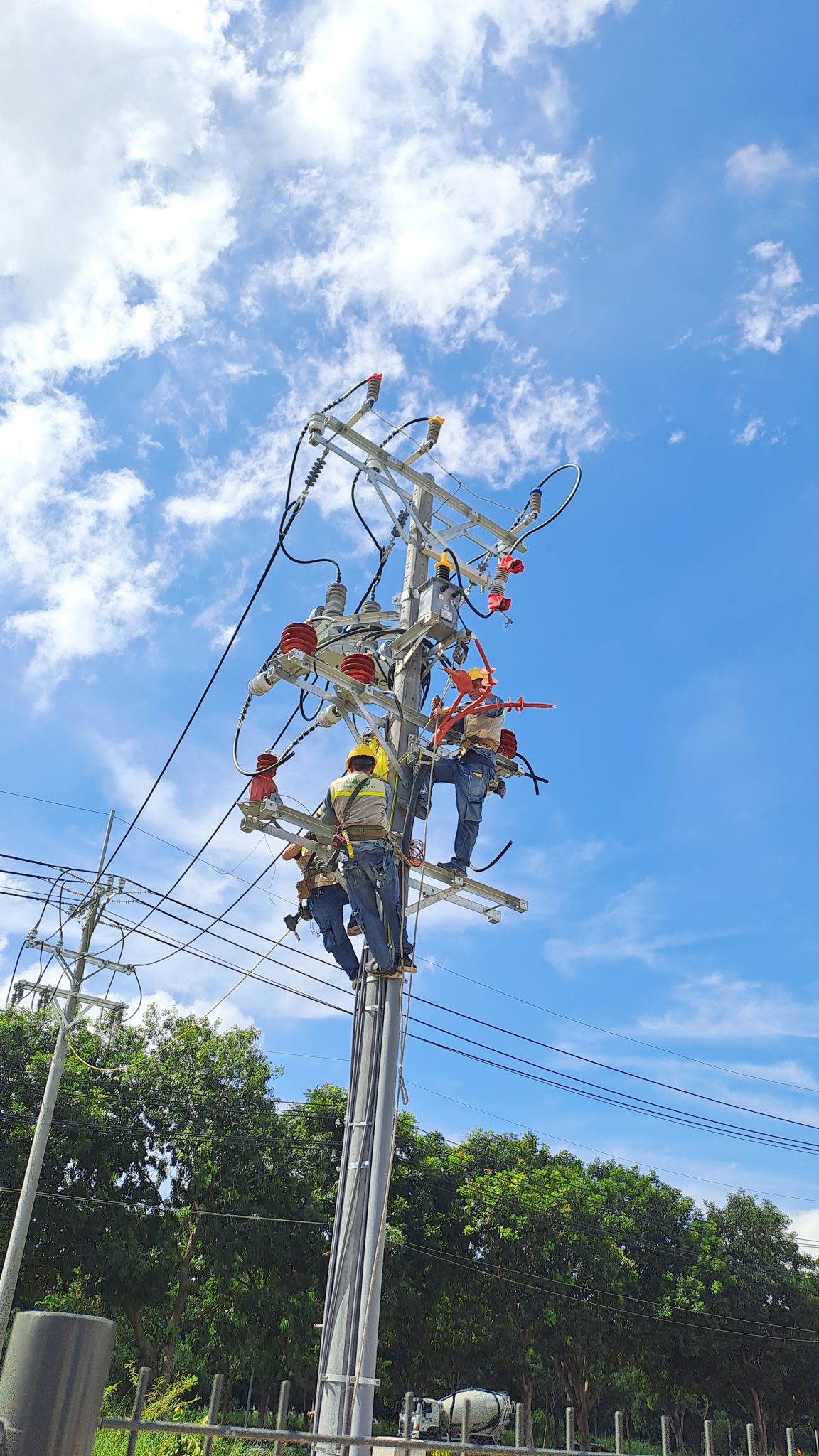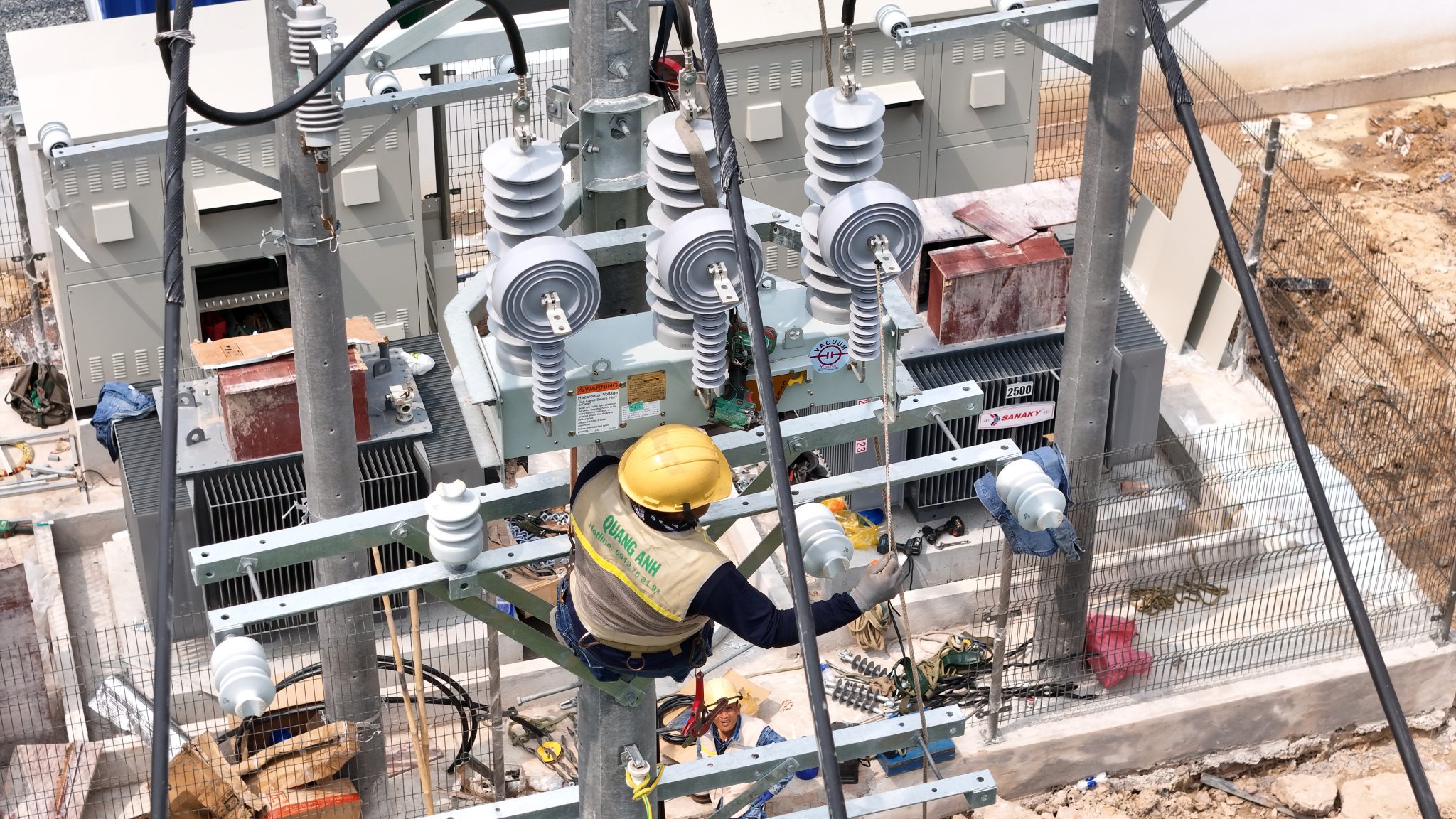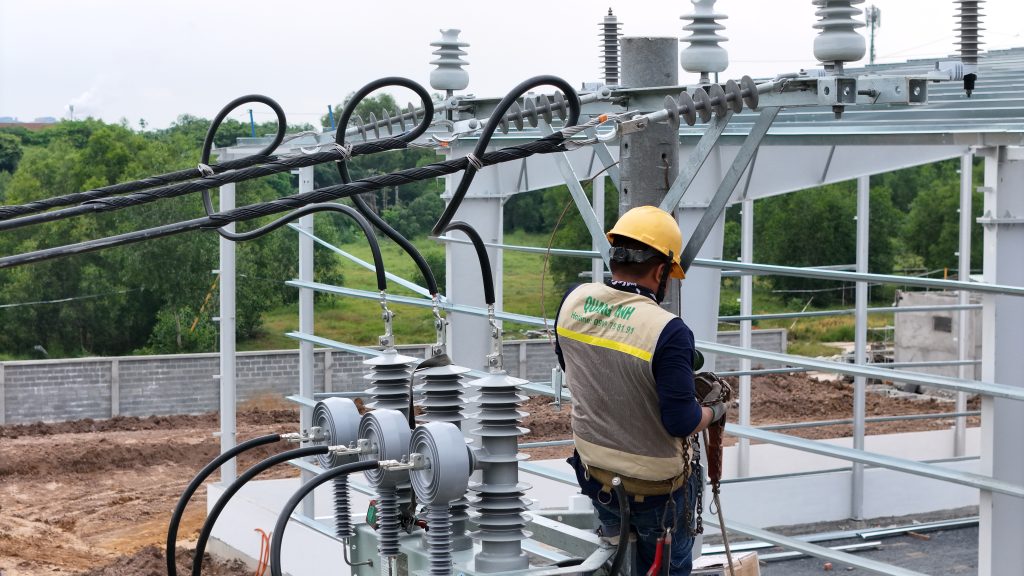News
Factory Electrical Construction Costs: Factors and Categories to Know
Electrical construction costs in factories depend on various factors such as construction progress, material quality, and project characteristics. Discover detailed pricing and key categories in the article below.
Factors Affecting Factory Electrical Construction Costs.
Key factors affecting factory electrical construction costs include construction progress and billing from the investor. Specific characteristics of the project, such as complexity, scale, and the quantity of equipment needing connection, also play a significant role. The geographical location of the project impacts transportation and labor costs. The quality of materials used also helps determine the price. Finally, warranty and maintenance requirements during and after construction should be considered when determining costs.
A range of technical and managerial factors play significant roles in determining factory electrical construction costs. Project characteristics are the first factor to consider, as each factory type has different electrical system designs and technical requirements. The project’s scale, complexity, and the functionality of each part affect equipment choices and reasonable construction methods, leading to cost variations.
- Electrical Project Characteristics: Planning the factory electrical system largely depends on each project’s characteristics, from design details to specific technical requirements. This not only affects the workload but also how many and which types of electrical equipment are needed.
- Volume of Electrical Equipment: The variety in quantity and types of equipment like wiring systems, electrical panels, and control devices needed significantly affects electrical construction costs.
- Industrial Electrical Materials: Prices for materials such as cables, lamps, and automation equipment fluctuate with the market. Brands like Cadivi, Schneider, or Mitsubishi can influence choices and consequently affect costs.
- Factory Construction Progress: Fast-paced progress requirements can increase costs due to the need to ramp up manpower and equipment to meet deadlines. Progress can also impact payment terms, affecting electrical construction costs.
- Payment Terms and Schedules: Flexible payment terms or phases can affect project cash flow and thus impact total costs.
- Construction Location: Geographical factors like transportation conditions for industrial electrical materials and site conditions determine costs related to necessary labor and equipment.
- Warranty and Maintenance Duration: Long-term warranty and maintenance requirements necessitate increased costs to ensure quality after-sales service.
- Contingency Measures, Upgrades: The need for upgrades when the factory electrical system is overloaded or outdated must also be considered, increasing overall costs.
Contractors need to meticulously calculate these factors in budget planning to effectively control factory electrical construction costs and best meet the project’s technical and quality requirements.

Main Construction Categories in Factory Electricals
Factory electrical construction involves several important categories. Typical examples include designing the power cable systems, cable ladder and tray systems, and lighting systems. Installing cable ladders and low-voltage cabinets, such as distribution, control, and power cabinets, are also essential. Additionally, light electrical systems like LAN, surveillance cameras, sound, and communications must be implemented to ensure operational efficiency. Finally, maintaining, repairing, renovating, and upgrading the electrical system as needed is indispensable for the stable operation of the factory.
In factory electrical construction, several main categories play crucial roles in ensuring the electrical systems operate efficiently and safely.
-
Main Power Cable System Construction
Designing and installing the main power cable system is a fundamental yet very important step, serving the distribution of electricity from the transformer station to the entire factory. This system includes overhead or underground power cables, as per technical requirements, which are routed through MCCB (ACB) devices and proceed to the main switchboard (MSB). Commonly used cables include those from brands like Cadivi, LS, and Schneider.
-
Cable Ladder Installation
Cable ladder systems not only fix but also guide electrical cable installations within the factory. Cable ladders are typically designed with sturdy materials to ensure durability and safety for the cable systems. Factories often use metal or composite ladders according to the project’s specific conditions.
-
Industrial Electrical Cabinet Installation (MSB)
Industrial electrical cabinets play a central role in managing and protecting the entire electrical system. With reputable brands like ABB and Mitsubishi, installing electrical cabinets requires a highly professional technical team to ensure safety and efficiency. This is the main area to connect main power cables and integrate cutting, protection devices.
-
Light Electrical and Lighting System Construction
This system includes auxiliary constructions such as lighting, fire alarm, and surveillance camera systems. These systems not only ensure safety but also create a comfortable working environment for employees. Using modern lighting devices from brands like Eaton or EMC also helps enhance efficiency and optimal energy savings.
Periodic maintenance of the electrical system is necessary to ensure the system operates stably and minimizes incidents. Activities like regular inspections, maintenance, and replacing faulty equipment need to be carried out regularly to ensure the system always operates at maximum efficiency and safety for industrial activities.

Considerations for Factory Electrical Construction
When conducting factory electrical construction, it should be noted that prices are often reference points and do not include taxes or additional costs. Each project requires a specific price list based on actual surveys and technical designs. Conditions such as the project’s characteristics and investor requirements also alter actual costs. Combining actual surveys, evaluating technical designs, progress, and agreed conditions is necessary to gain a comprehensive understanding of factory electrical construction costs.
Factory electrical construction poses numerous challenges related to safety and operational efficiency of the industrial electrical system. To ensure electrical construction is safe and efficient, the following aspects should be observed:
Thoroughly Study Electrical Design Drawings
Electrical design drawings are fundamental for calculating power needs and accurately determining the installation position of electrical devices. This is especially important with industrial wiring systems, where device positioning and connection determine usage efficiency.
Choosing Industrial Electrical Materials and Devices
- Use conductors, electrical cabinets from reputable brands like Cadivi, Schneider, ensuring quality and fitting for expected loads.
- Only apply protective devices with clear sources to ensure operational safety.
Adhere to Electrical Construction Procedures and Law
- Obtain construction permits from the state authorities to ensure compliance with legal regulations concerning electrical safety in industrial construction.
- Clarify conditions and requirements from contractors and investors to avoid conflicts during construction.
Safety Principles During Construction
- Always cut power before construction; fully equip with tools and labor protection equipment.
- Arrange wiring neatly, avoid damage-prone areas, and mark clearly to prevent unnecessary accidents.
Industrial Wiring System Done Correctly
- Install the electrical wiring system from the transformer station through MCCB to the main distribution board and other electrical devices in accordance with technical standards to ensure safety and durability.
- Use cable ladders and waterproof materials like PVC pipes to protect underground wiring.
- Fix cables to ensure smoothness and safety from any physical impact.
Inspection and Acceptance
Before commissioning, the entire system must be thoroughly checked for connection status, insulation resistance, and other safety factors.
Ensure Construction Progress and Quality
Reporting construction progress periodically to management authorities helps maintain schedules and ensure the work quality as committed.
Finally, do not make unauthorized changes or construction without in-depth technical knowledge or without coordination with the designer.

Understanding factory electrical construction costs helps optimize resources and ensure project quality. Thoroughly evaluating necessary factors and categories not only optimizes costs but also ensures long-term investment efficiency.
For factory electrical design and construction consultation, contact QuangAnhcons at hotline +84 9 1975 8191.
QuangAnhcons provides comprehensive factory electrical construction solutions, including design, installation, and electrical system maintenance, ensuring quality and high operational efficiency.

 Tiếng Việt
Tiếng Việt 简体中文
简体中文 Deutsch
Deutsch 日本語
日本語 한국어
한국어 ไทย
ไทย Русский
Русский Français
Français
